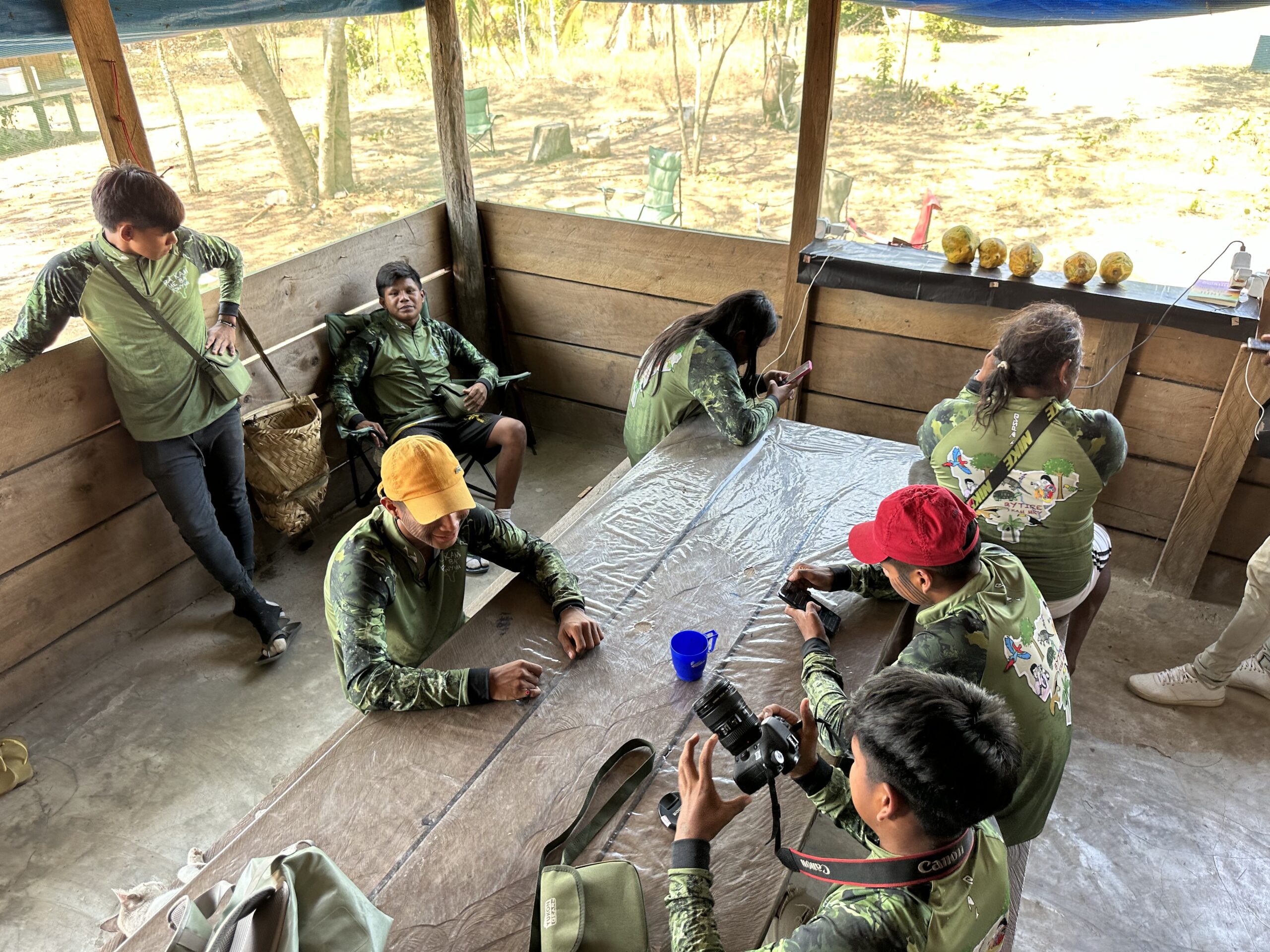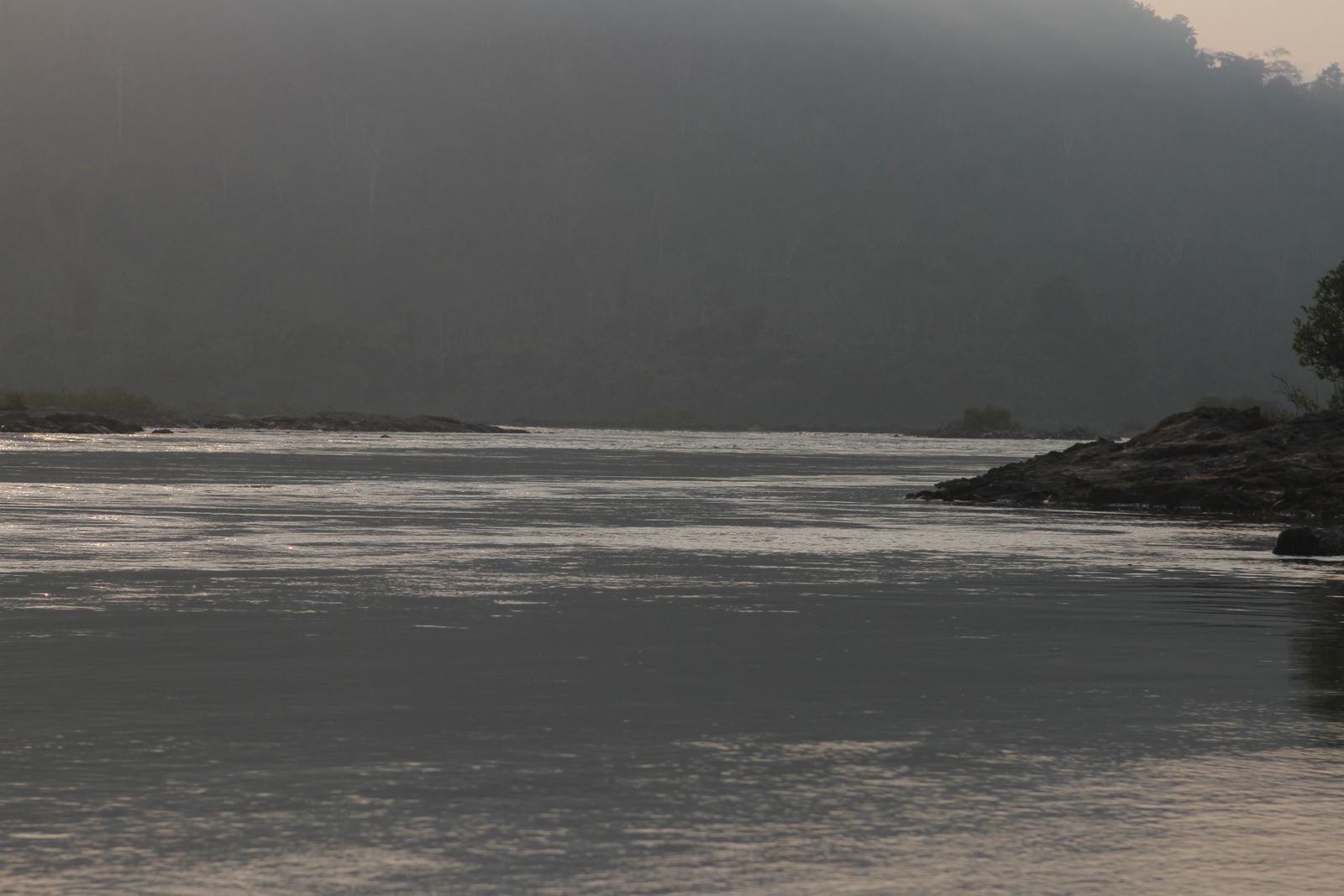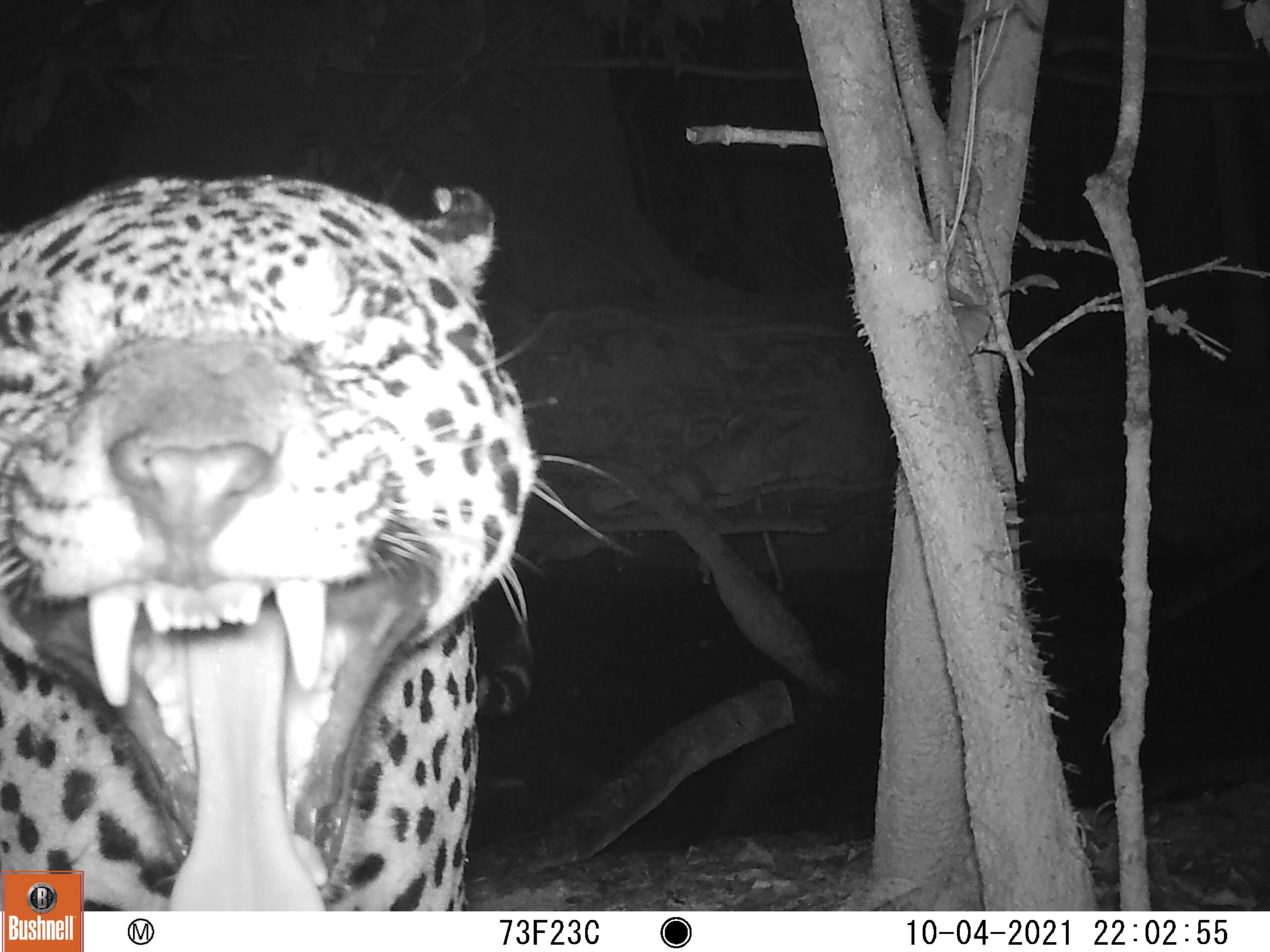Equipe da Bà: Alliance Between Technology, Knowledge, and Ancestral Wisdom to Conserve the Mēbêngôkre Forest
The Kamoktidjam village, located on the banks of the Xingu River in the Kayapó Indigenous Territory, was the center of the 2024 season of the “Equipe da Bà/Ba Kam Mē Bà Djwynh” project, a program that combines the use of audiovisual technology and traditional knowledge to strengthen environmental conservation. From July 25 to August 22, 2024, more than 40 Mẽbêngôkre from 13 villages actively participated in a journey that combined walks in the forest with learning about audiovisual monitoring technologies, such as the use of trail cameras, nature photography, and drones, along with the ancestral knowledge passed down by the elders (mebengêt).
The initiative promotes income generation for the community through an Intercultural Ecotourism initiative developed this year simultaneously at Xingu Lodge, managed by partners from @xingulodge, with 10 visitors from different countries as part of the Intercultural Ecotourism Program. These visitors included international education instructors, nature photographers specializing in birdwatching, and biology researchers. The program stands out as a conservation model that recognizes the connection between Indigenous knowledge and science, promoting a significant socio-environmental impact.

Equipe da Bà: Alliance Between Technology, Knowledge, and Ancestral Wisdom to Conserve the Mēbêngôkre Forest
The Kamoktidjam village, located on the banks of the Xingu River in the Kayapó Indigenous Territory, was the center of the 2024 season of the “Equipe da Bà/Ba Kam Mē Bà Djwynh” project, a program that combines the use of audiovisual technology and traditional knowledge to strengthen environmental conservation. From July 25 to August 22, 2024, more than 40 Mẽbêngôkre from 13 villages actively participated in a journey that combined walks in the forest with learning about audiovisual monitoring technologies, such as the use of trail cameras, nature photography, and drones, along with the ancestral knowledge passed down by the elders (mebengêt).
The initiative promotes income generation for the community through an Intercultural Ecotourism initiative developed this year simultaneously at Xingu Lodge, managed by partners from @xingulodge, with 10 visitors from different countries as part of the Intercultural Ecotourism Program. These visitors included international education instructors, nature photographers specializing in birdwatching, and biology researchers. The program stands out as a conservation model that recognizes the connection between Indigenous knowledge and science, promoting a significant socio-environmental impact.

A Conservation Project and a Journey of Knowledge
The program is a joint initiative of the community from the thirteen villages of Xingu in the Kayapó Indigenous Territory, the Kayapó Project, the ICFC – International Conservation Fund of Canada, and the Associação Floresta Protegida, under the coordination of conservation scientist Natalie Knowles. The 2024 season of the “Equipe da Bà” project was carefully structured to provide a deep immersion in the knowledge about the biodiversity of the Mẽbêngôkre territory, around the Kamoktidjam village. Over 40 members from the Pykãrãrakre, Kawatire, Kakore, Kruwanhongo, Kawatire, Kokotkrere, Kamure, Kri-nhô-ere, Pokrô, Madjyre, Kokrajmôro, and Kamoktidjam communities, Xingu villages, participated in the activities. Through activities involving young people and elders in walks through the forest, the initiative promoted a rich learning journey, reinforcing the commitment to conserving the Amazon and protecting its natural resources.
Morning Trails, Afternoon Tech
The activities were divided into two main axes: morning walks in the forest, where participants followed trails, identified species, and installed monitoring trail cameras, and afternoon workshops focused on handling technologies and making traditional crafts. At night, activities included reviewing captured images, Mẽbêngôkre film sessions, and stories told by the elders.
These activities provided technical learning to the youth, strengthening the connection between different generations. Under the guidance of the mebengêt (the elders), the youth learned about medicinal plants, remedies, animal tracks, and places of cultural importance while using technologies to document and monitor biodiversity. “This is my first time working here. Working here is good for young people because those who work on the project can learn to use technology, like drones. That’s why each village has a mebengêt, who can teach the names of trees, remedies, and things from the forest. The young can accompany the mebengêt in the forest, and they will not forget. Mejdjwyj (a slang term referring to something truly good, beautiful, and right).” This combination of knowledge is crucial for preserving the forest, which remains one of the last refuges for numerous species of fauna and flora, many of them endemic and endangered.

One of the highlights of the season was the opportunity offered to the young Mẽbêngôkre to act as guides for ecotourists who visited Xingu Lodge as part of the Intercultural Ecotourism program, another partnership of the Kayapó Project with the Associação Floresta Protegida. This experience prepared the participants for future tourism initiatives, providing valuable insights on how to enhance ecotourism projects in the region. By leading visitors through the forest, the youth benefited from a rich exchange of knowledge. One ecotourist, a professional photographer, offered a workshop on pinhole cameras, while a biologist shared detailed information about animal trails. This interaction strengthened the bridge between traditional knowledge and conservation technologies.
The group dynamics, composed of participants from different villages, also promoted solidarity and collaboration among communities, strengthening cultural and social ties. By using new technologies, such as trail cameras, the youth had the opportunity to learn and recall stories and knowledge passed down by the mebengêt (elders), ensuring that ancestral wisdom continues to be preserved and valued.
Sophia Polson, a 2024 ecotourist, shares her drone operating experience with the Forest Team.
Advanced Technology for Forest Conservation
The Indigenous Lands of the Mēbêngôkre people, spanning over 10.6 million hectares, constitute one of the largest contiguous blocks of tropical forest in the Eastern Amazon. Located in the so-called “Arc of Deforestation,” specifically in the Xingu socio-biodiversity corridor, a critical region in the Amazon, this area faces constant deforestation pressures due to agricultural expansion, illegal mining, and logging. However, thanks to the presence of the Mēbêngôkre and other Indigenous peoples and traditional populations in the basin, and the territorial control exercised by these communities, this area remains largely intact, playing a key role in climate regulation and maintaining biodiversity, including transition biomes between the savannah and Amazon rainforest, as well as an important variety of endemic species.
The “Equipe da Bà” project emerges as a response to these threats, combining technology and traditional knowledge to protect the forest. The use of trail cameras and drones, guided by the wisdom of the elders, allows for effective and targeted surveillance that not only protects the territory but also generates invaluable scientific data. This information is shared with researchers and conservationists, contributing to global science and strengthening conservation strategies.
The project demonstrates that the union between technology and tradition can be a powerful force in the struggle for environmental and cultural preservation. By empowering the new Mẽbêngôkre generations to protect their land, the project not only ensures the continuity of ancestral knowledge but also strengthens the cultural identity of the involved communities. The ecological importance of this 10.6-million-hectare block of land goes beyond species preservation; located in the Xingu basin, it plays a crucial role in climate regulation and maintaining the water cycles of the Amazon.

Building a structured curriculum for the “Equipe da Bà” project is essential to ensure the continuity and effectiveness of this initiative. Many Mẽbêngôkre have valuable ideas on how the program can be used to preserve and transmit forest knowledge. By including these voices and experiences in creating a curriculum, the project respects the community’s priorities and values while ensuring that the knowledge considered most important by the Mẽbêngôkre themselves is perpetuated.
The success of the “Equipe da Bà” project reaffirms that tradition and innovation are not opposing forces but rather complementary, and that cultural resistance remains a vital force in the fight for environmental conservation and the survival and dignity of Indigenous peoples. By strengthening these practices, the “Equipe da Bà” has the potential to become a model for other Indigenous communities facing similar challenges, promoting a future where culture, knowledge, and nature can thrive together.
A Conservation Project and a Journey of Knowledge

The program is a joint initiative of the community from the thirteen villages of Xingu in the Kayapó Indigenous Territory, the Kayapó Project, the ICFC – International Conservation Fund of Canada, and the Associação Floresta Protegida, under the coordination of conservation scientist Natalie Knowles. The 2024 season of the “Equipe da Bà” project was carefully structured to provide a deep immersion in the knowledge about the biodiversity of the Mẽbêngôkre territory, around the Kamoktidjam village. Over 40 members from the Pykãrãrakre, Kawatire, Kakore, Kruwanhongo, Kawatire, Kokotkrere, Kamure, Kri-nhô-ere, Pokrô, Madjyre, Kokrajmôro, and Kamoktidjam communities, Xingu villages, participated in the activities. Through activities involving young people and elders in walks through the forest, the initiative promoted a rich learning journey, reinforcing the commitment to conserving the Amazon and protecting its natural resources.
Stay Connected to the Amazon
Sign Up for Powerful Kayapo Field Reports
Morning Trails, Afternoon Tech
The activities were divided into two main axes: morning walks in the forest, where participants followed trails, identified species, and installed monitoring trail cameras, and afternoon workshops focused on handling technologies and making traditional crafts. At night, activities included reviewing captured images, Mẽbêngôkre film sessions, and stories told by the elders.
These activities provided technical learning to the youth, strengthening the connection between different generations. Under the guidance of the mebengêt (the elders), the youth learned about medicinal plants, remedies, animal tracks, and places of cultural importance while using technologies to document and monitor biodiversity. “This is my first time working here. Working here is good for young people because those who work on the project can learn to use technology, like drones. That’s why each village has a mebengêt, who can teach the names of trees, remedies, and things from the forest. The young can accompany the mebengêt in the forest, and they will not forget. Mejdjwyj (a slang term referring to something truly good, beautiful, and right).” This combination of knowledge is crucial for preserving the forest, which remains one of the last refuges for numerous species of fauna and flora, many of them endemic and endangered.


One of the highlights of the season was the opportunity offered to the young Mẽbêngôkre to act as guides for ecotourists who visited Xingu Lodge as part of the Intercultural Ecotourism program, another partnership of the Kayapó Project with the Associação Floresta Protegida. This experience prepared the participants for future tourism initiatives, providing valuable insights on how to enhance ecotourism projects in the region. By leading visitors through the forest, the youth benefited from a rich exchange of knowledge. One ecotourist, a professional photographer, offered a workshop on pinhole cameras, while a biologist shared detailed information about animal trails. This interaction strengthened the bridge between traditional knowledge and conservation technologies.
The group dynamics, composed of participants from different villages, also promoted solidarity and collaboration among communities, strengthening cultural and social ties. By using new technologies, such as trail cameras, the youth had the opportunity to learn and recall stories and knowledge passed down by the mebengêt (elders), ensuring that ancestral wisdom continues to be preserved and valued.
Advanced Technology for Forest Conservation
The Indigenous Lands of the Mēbêngôkre people, spanning over 10.6 million hectares, constitute one of the largest contiguous blocks of tropical forest in the Eastern Amazon. Located in the so-called “Arc of Deforestation,” specifically in the Xingu socio-biodiversity corridor, a critical region in the Amazon, this area faces constant deforestation pressures due to agricultural expansion, illegal mining, and logging. However, thanks to the presence of the Mēbêngôkre and other Indigenous peoples and traditional populations in the basin, and the territorial control exercised by these communities, this area remains largely intact, playing a key role in climate regulation and maintaining biodiversity, including transition biomes between the savannah and Amazon rainforest, as well as an important variety of endemic species.
The “Equipe da Bà” project emerges as a response to these threats, combining technology and traditional knowledge to protect the forest. The use of trail cameras and drones, guided by the wisdom of the elders, allows for effective and targeted surveillance that not only protects the territory but also generates invaluable scientific data. This information is shared with researchers and conservationists, contributing to global science and strengthening conservation strategies.
The project demonstrates that the union between technology and tradition can be a powerful force in the struggle for environmental and cultural preservation. By empowering the new Mẽbêngôkre generations to protect their land, the project not only ensures the continuity of ancestral knowledge but also strengthens the cultural identity of the involved communities. The ecological importance of this 10.6-million-hectare block of land goes beyond species preservation; located in the Xingu basin, it plays a crucial role in climate regulation and maintaining the water cycles of the Amazon.


Building a structured curriculum for the “Equipe da Bà” project is essential to ensure the continuity and effectiveness of this initiative. Many Mẽbêngôkre have valuable ideas on how the program can be used to preserve and transmit forest knowledge. By including these voices and experiences in creating a curriculum, the project respects the community’s priorities and values while ensuring that the knowledge considered most important by the Mẽbêngôkre themselves is perpetuated.
The success of the “Equipe da Bà” project reaffirms that tradition and innovation are not opposing forces but rather complementary, and that cultural resistance remains a vital force in the fight for environmental conservation and the survival and dignity of Indigenous peoples. By strengthening these practices, the “Equipe da Bà” has the potential to become a model for other Indigenous communities facing similar challenges, promoting a future where culture, knowledge, and nature can thrive together.

